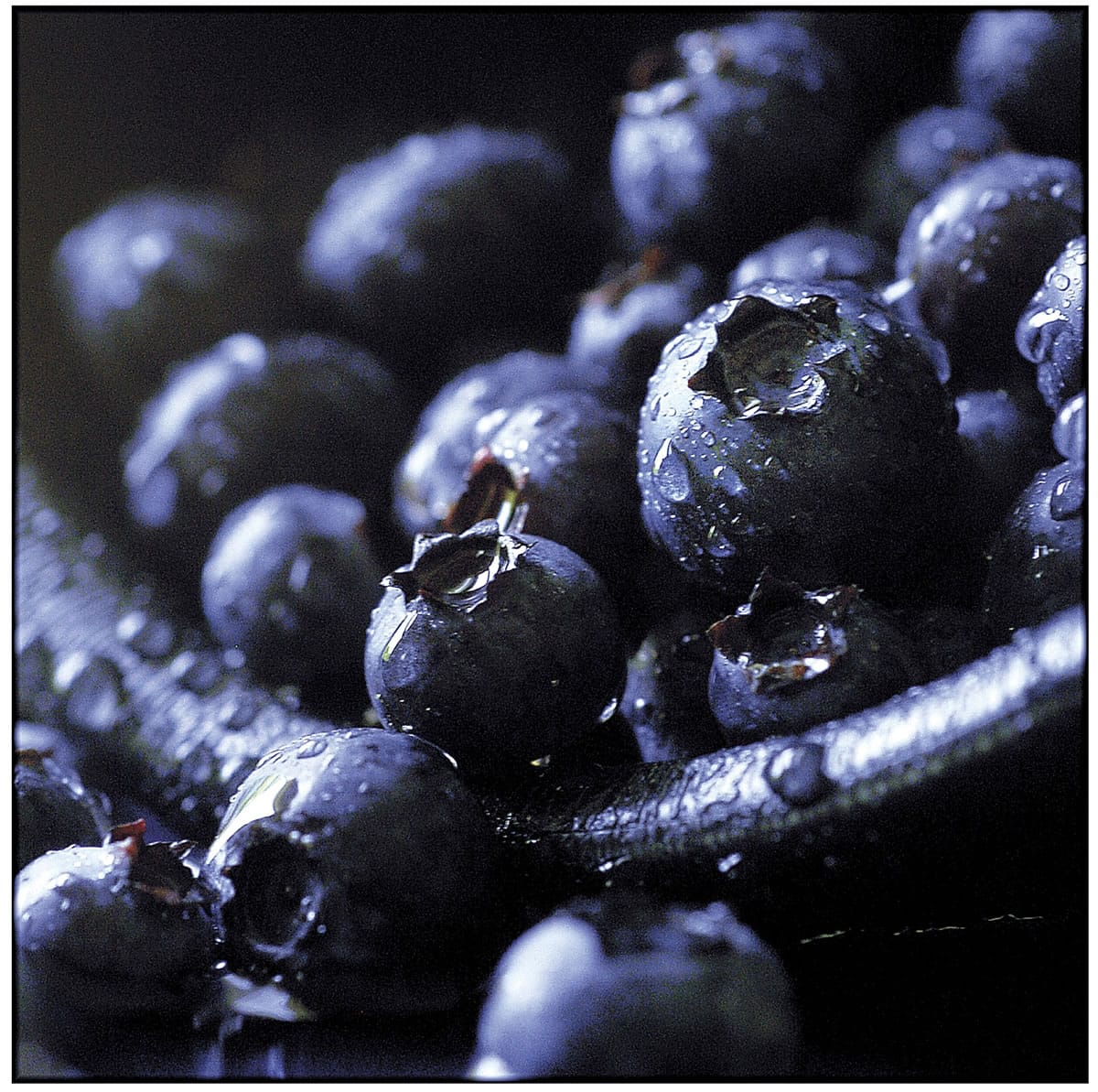Blueberries provide a powerful punch of sweet flavor and health benefits in sizes ranging from a pea to a marble.
But how to you pick the best blueberries? And how do you store them?
Available in farmers markets, farm stands, and U-picks, local blueberry varieties include Earli Blues, Blue Crop, Spartan, Chandler, and Aurora. Berry color indicates ripeness. They should be purple-blue to blue-black with silver or grayish bloom covering the berry’s surface, which provides a protective coating. Blueberries do not continue ripening after picking.
Select ripe blueberries that are firm, dry, plump, smooth-skinned and have no leaves or stems. Avoid dull, soft, or moist berries, as these are indicators of damage, decay or mold.
If fresh picked or purchased berries are warm, leave containers open while berries cool in order to prevent moisture from forming on them.
Blueberries are the most flavorful and nutritious when eaten fresh. However, blueberries can last up to 10 days stored in the refrigerator in a covered container or up to six months in a zero-degree freezer without significant loss of flavor or antioxidant capacity.
Wash blueberries when you are ready to eat them by rinsing gently in running water and then patting dry. Don’t let them sit in water as they will soften and lose quality.
When freezing blueberries, place the washed, dry berries in a single layer on a pan lined with wax or parchment paper in the freezer. Once frozen, package the berries in freezer containers.
Blueberries are 85 percent water, so preparation of dehydrated blueberries requires a process called “checking,” in which the berries’ skins are altered to allow moisture to escape during the dehydrating process. To check the berry skin, put the fresh berries in boiling water for 15 to 30 seconds then immediately put the berries in ice water to stop the cooking. Remove the berries from the ice water, drain on paper towels, place on the dehydrator and proceed with dehydrating. Be sure to put a small mesh screen on the drying tray as the berries shrink in size substantially as they dry and may fall through the tray.
Blueberries can be enjoyed fresh by themselves or by pairing with other foods such yogurt, cereal, oatmeal, frozen treats, baked goods or fruit leathers.
Fresh or frozen blueberries can be used to make jams, jellies, pies, juices, cobblers, syrups or baked goods.
To calculate the amount of blueberries needed for a recipe: 1 pint of fresh blueberries equals ¾ of a pound or 2 cups. The filling for a 9-inch pie shell requires 4 pints of fresh blueberries or 3 pounds. One 10-ounce package of frozen blueberries equals 1½ cups of blueberries.
Blueberries are in the same family as cranberries, azaleas, rhododendrons and mountain laurels. Second only to strawberries in popularity, blueberries are native to North America with peak availability between June and October.
A single serving (1 cup) of uncooked blueberries contains 80 calories. Blueberries have demonstrable benefits to cognitive, cardiovascular and eye health; blood sugar regulation; and cancer prevention.
Leigh Rosenberger is a Washington State University Clark County Extension Master Food Preserver. For more information, contact the Master Food Preserver Hotline at 360-697-6060, ext. 5366, or at clark.wsu.edu.




